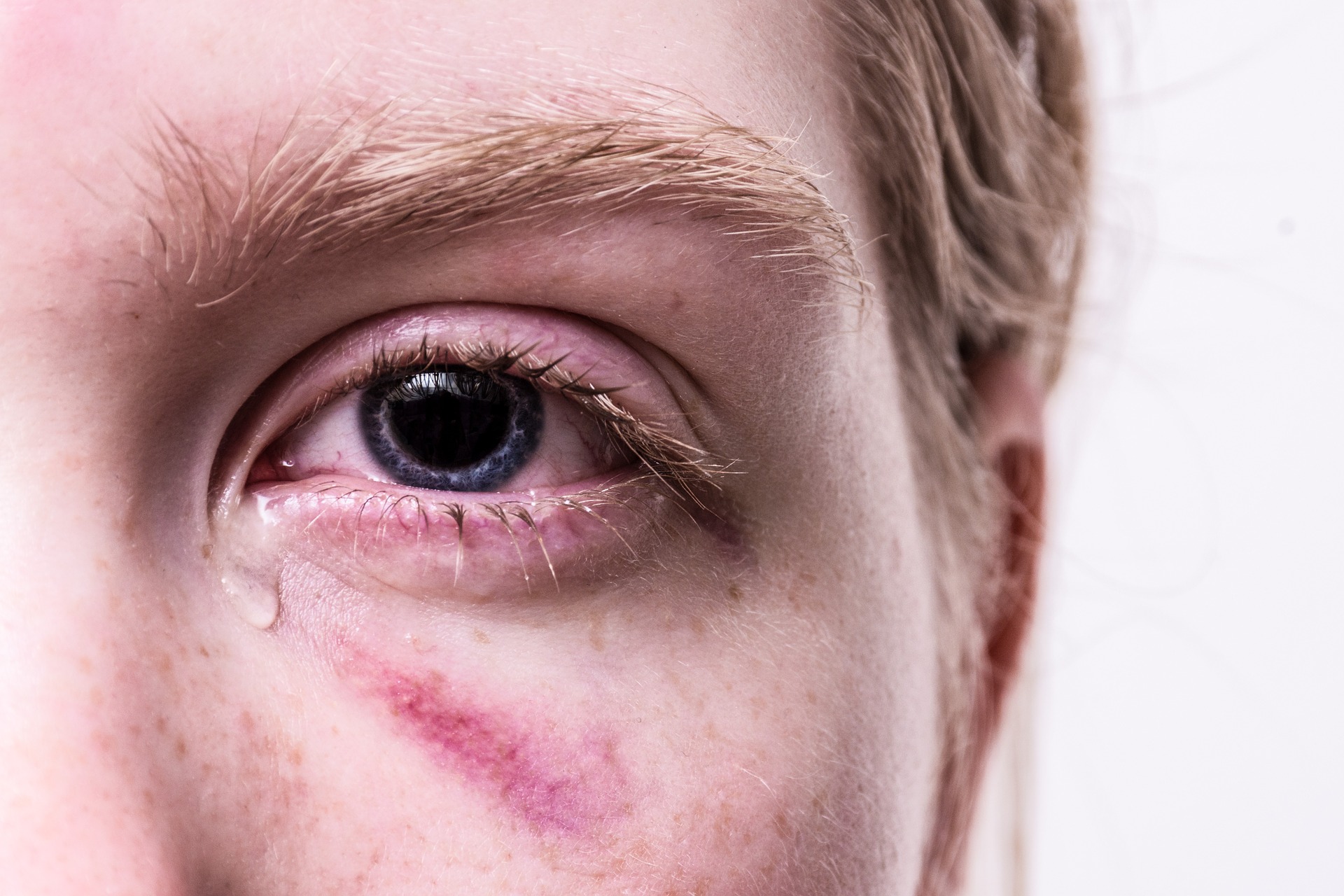From car accidents and workplace injuries to medical malpractice and slip and falls, eye injuries are common among accident victims and victims of negligence. All parts of the human eye are incredibly delicate, so it stands to reason that eye injuries can be quite serious and even life-altering, especially in the most severe cases.
Eye injuries are not uncommon and can result in mild to severe damage among victims.
The personal injury experts at The Thistle Law Firm have compiled the following list of the eight most common eye injuries and their causes.
Table of Contents
1. Eye Swelling
Swelling and discoloration around a victim’s eyes and eyelids are common eye injuries associated with accidents. Eye swelling is typically caused by some blunt trauma or impact on the eye.
While a black eye is common, it can often signify a more serious injury, especially after a car crash or slip and fall accident. Swelling around the eye may be a sign of interior eye damage or a bone fracture.
Applying an ice pack usually helps to reduce eye inflammation and pain. However, it is always important to seek medical help following an accident to ensure that the injury isn’t more serious.
2. Corneal Abrasion
Corneal abrasions are eye scratches. When small foreign objects, like dust, sand, or other small particles, enter the eye, they can scratch the cornea, resulting in redness, soreness, and sensitivity to light.
It is not uncommon for a foreign object to make its way into an accident victim’s eye, which can be incredibly uncomfortable. If this happens to you, seek medical attention as corneal abrasions will lead to serious injury, including blindness, if left untreated

3. Chemical Burn
A chemical burn from a caustic substance can severely damage a victim’s eye.
We are all familiar with warning labels that exist on popular cleaning products that say, “Avoid contact with eyes.” This warning exists because when even the tiniest amount of chemicals can cause eye irritation, severe burns, and even blindness.
Eye injuries resulting from chemical burns are most common in workplace accidents.
If your eyes are exposed to caustic chemicals, you should immediately call 911. Unless your workplace has an official eye washing station approved for use with the substances you have been exposed to, do not attempt to wash out your eyes, as this can worsen the situation.
4. Traumatic Iritis
Traumatic iritis is an inflammation of the iris, which is the colored portion of the human eye, and is a reaction to cuts, bruises, or tears resulting from trauma. If left untreated, pressure can build up and cause lasting damage.
Any injury following a philadelphia bike accident or slip and fall that results in redness, aching, or blurred vision may indicate traumatic iritis. A thorough exam can usually spot the injury. With medicine, the condition usually clears up in a couple of weeks.
5. Eye Bleeding
An “eye bleed” occurs when blood leaks from the blood vessels located in the whites of the eye.
Eye bleeds are quite common and often appear far worse than they are. They are known to be caused by simply coughing or sneezing. Head injuries from car accidents can usually lead to a mild eye bleed.
Also known as a “subconjunctival hemorrhage,” an eye bleed is typically painless and will heal on its own over time.
6. Hyphemas
A hyphema is yet another kind of bleeding in the eye, but in this case, it occurs between the cornea and iris and is more serious. When left untreated, a hyphema may result in permanent loss of vision.
A hyphema is typically the result of some head trauma from a car accident, but it can also be a side effect of blood vessel disorders, herpes infections, and cancer. Hyphema symptoms typically include eye pain and blurry vision.

7. Orbital Blowout Fracture
An orbital blowout fracture (OBF) is an eye injury resulting from a blunt force trauma to an individual’s face. They are common in car accidents involving cyclists, pedestrians, or motorcyclists.
An OBF typically indicates bone fractures in the face and around the victim’s eye. X-rays generally are required to assess the extent of any damage caused by an OBF. Sometimes strong blunt force trauma that leads to this fracture can also lead to a detached retina.
8. Eye Penetration
Tiny particles entering the eye and causing an abrasion are one thing, but having an object penetrate the eye is quite another. An accident can easily cause smashed glass, a stone, or some other foreign object to penetrate the eye, which is a painful experience and a traumatic one.
Under no circumstances should you try and remove the object on your own because attempting to do so could cause even more damage. Instead, seek medical attention immediately.
Seeking Legal Advice Following an Accident
If you or a loved one has suffered a serious eye injury or any other type of injury following a truck accident, car accident, construction site accident, work-related accident, or even medical malpractice, you may be entitled to compensation. That’s why you should consult an experienced Philadelphia personal injury attorney as soon as possible to understand your rights and to hold those responsible for your eye injury accountable.
The team at Thistle Law Firm is made up of experienced attorneys whose mission is to help individuals who have suffered a serious injury due to the fault or negligence of another party. The Thistle team takes pride in getting the best possible outcome for its clients.
Contact the Pennsylvania eye injury attorneys at The Thistle Law Firm today or call them directly at 215-525-6824 to schedule a free consultation.

Dan Thistle grew up in Montgomery County, Pennsylvania and is a graduate of St. Joseph’s Preparatory School and the University of Pennsylvania. After graduating from Penn, Dan followed in his father’s footsteps and attended the Villanova University School of Law. In October, 2006, he was privileged to join him as a member of The Thistle Law Firm.

